Türkic Warriors and Archers
INTRODUCTION
Alexander Sarcophagus
Marble, Sidon (Lebanon), Late fourth century BC
195 x 318 x 167cm
The so-called Alexander Sarcophagus of Istanbul Archaeological Museum is regarded as one of the most important archaeological discoveries of the nineteenth century. It was found in 1887 in the underground royal necropolis of Sidon (present day Saida). Originally it was painted. The sarcophagus belonged to the King of Sidon Abdalonymos. One of the long sides of its casket shows a battle scene between the Scythians (Sakas) in the Persian service and the Greeks, i.e. Macedonians (the Thracians that the Greeks called the barbarians) of the Alexander's army. The opposite long face is decorated with two hunting scenes, those of a lion and a deer, where both the Scythians and Greeks participate. One of its short sides bear a battle scene of three isolated fights. The other short side shows a panther hunt. It is notable that for the sculptor, no Persian soldiers exist, and to show a Persian warrior, the sculptor has only Scythian warriors for a model. Reportedly, this is one of two sarcophaguses contracted by Alexander Macedonian himself. The silver swords, composite bows and arrows were stolen eons ago, so only the traces of metal embedded into the marble indicate the weapons used by the participants of the reliefs.
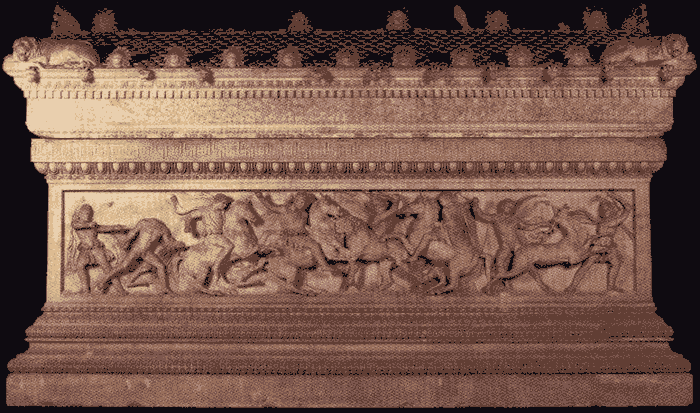
Det 1. Detail from the Alexander Sarcophagus. Alexander the Great
mounted on a horse and chasing a Persian Scyth soldier.
Note the pointed hat and the boots of the Scythian and the bare hill
of helmeted Alexander.
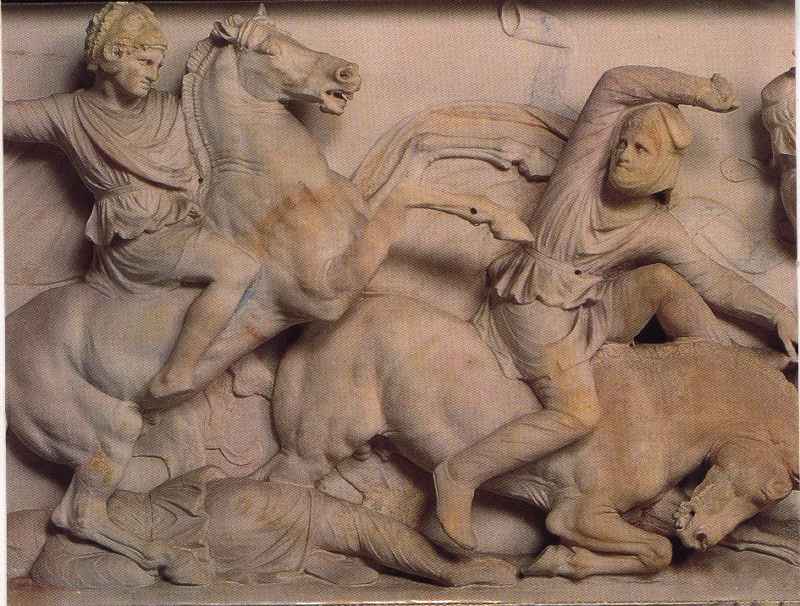
Det 2. A mounted Scythian charging a Greek, a hooded Scythian arrower, a Scythian lowering his hooded
dead Scythian friend
Note the demonstrably barefoot Greek warrior and the booted Scythians

Det 3. A barefoot Greek commander charges a boots-clad Scythian falling from his horse
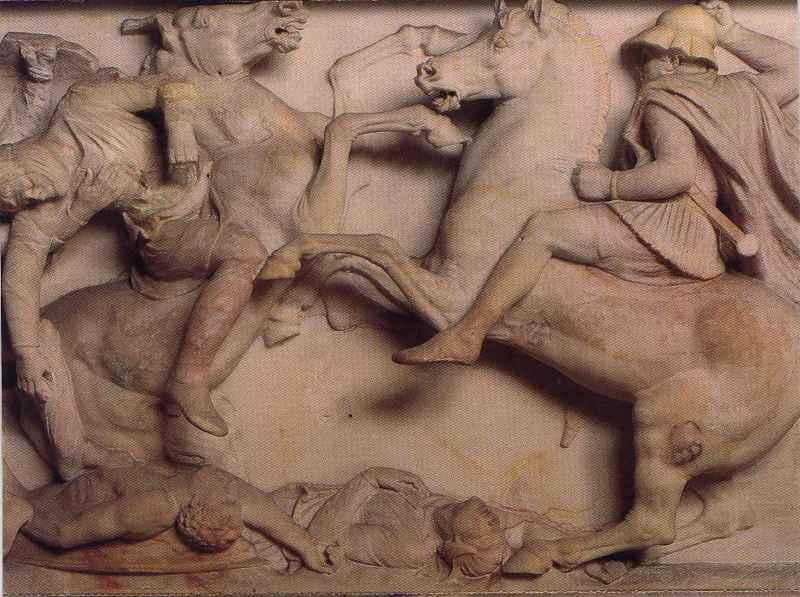
Det 4. Four Scythians at a panther hunt
This is a good illustration of what Achaemenids called "Saka Tigrakhauda"
and the Greeks "Kermikhions" and "Melanchlaeni",
ie "pointed
hat Saka".
For the patterns for the hats, socks, suspender belts and boots see
http://www.dom-np.narod.ru/rekon/rhazar.htm
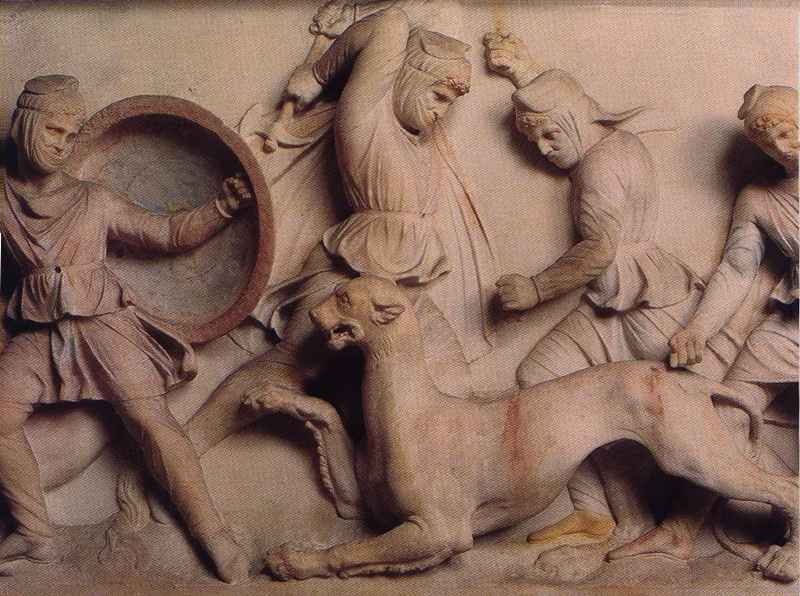
Det 5. A Scyth and a Greek, thought to be Hephaestion (a general of Alexander and
his closest friend) at a lion hunt
Scyth dressed in a pointed head-dress, with a barefoot
Greek general.

Det 6. A Greek and a Scyth at a deer hunt
Scyth dressed in a pointed head-dress and boots, with a savage-dressed barefoot
Greek added for a better contrast.

Det 7. Scyth dressed in a pointed head-dress and boots charges a fallen barefoot Greek, and a helmeted barefoot Greek killing a Scyth wearing boots
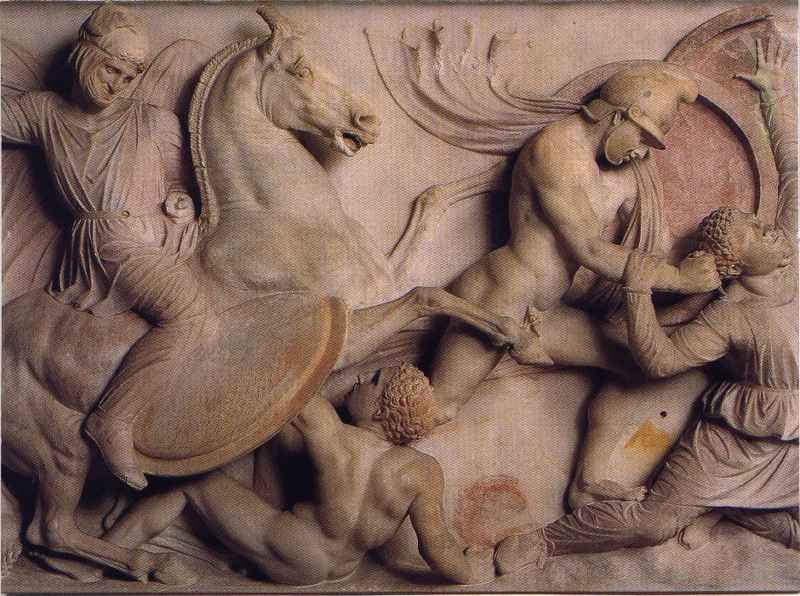
Source
Notes